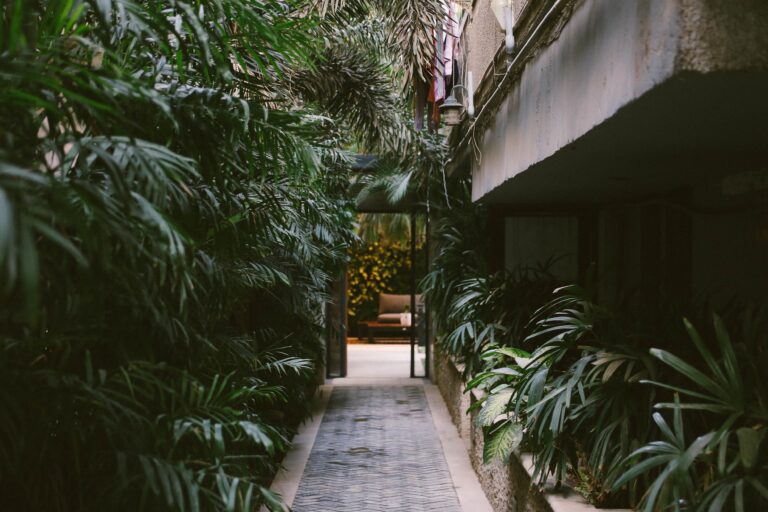
GARDENING TIPS
If you're looking for helpful articles on gardening, look no further! We've compiled a list of articles that will provide you with everything you need to know to get started with your gardening projects.

TREE CARE
Tree care is important for the health and beauty of your trees. At [reads nursery], we write about tree care topics such as tree pruning, tree fertilization, and tree diseases. Check out our articles to learn more about how to keep your trees healthy and looking their best!

SOIL ADVICE
We write about soil advice articles to help people better understand the composition of soils and how to maintain them. Soils are essential to plant growth, so it's important to know how to take care of them. Our articles cover topics like soil pH, nutrients, and drainage.
STORY ABOUT US
HOW WE GREW INTO TODAY.
Reads nursery is a blog dedicated to gardening, tree care and fruit tree advice.
We have a passion for plants and gardening and love sharing our knowledge with others.
We believe that everyone can benefit from a little time spent in the garden, whether it’s for relaxation, exercise or simply to enjoy the outdoors. We aim to provide helpful and practical advice on a range of topics, from choosing the right plants for your garden, to caring for them and dealing with common problems.
We also have a range of guides on fruit tree care, including how to prune, fertilize and water your trees, as well as dealing with pests and diseases. We hope that our blog will inspire and encourage you to get outside and get gardening!
Jennifer Glance
Founder of Reads Nursery.
STORY ABOUT US
Our topics.
Our Articles
Are you eager to
learn?
At Reads Nursery, we know that having a beautiful garden isn‘t just about having pretty flowers.
It‘s about having healthy soil, the right plants for your climate, and knowing how to take care of them.
That‘s why we offer articles on gardening, tree care, and soil advice.
Whether you‘re a seasoned green thumb or just getting started, we have the information you need to make your garden thrive.
Looking to add some color to your garden? Check out our articles on annuals, perennials, and bulbs. Not sure what plants are best for your climate? We can help with that, too. And if you‘re having trouble with pests or diseases, we have articles on that, as well.
We know that taking care of your garden can be a lot of work. But it‘s also a lot of fun.
So whether you‘re looking for information or just some inspiration, be sure to check out our articles.


Garden Care

Tree Care

Soil Advice

Irrigation
Articles & Advice
TIPS, ADVICE AND GUIDANCE.
Gardening is a great way to spruce up your home and make it more inviting. However, if you have an old fence, it can take away from your garden’s beauty. Soft or hardwoods are typically used to construct fences, although this is expected to alter in the upcoming years. This is where composite fencing comes in. A comparatively new building material known as composite wood has a staggering number of alluring qualities. Luxuryscreens.co.uk the leading provide of composite fence panels in the UK has an outstanding collection of beautiful fence designs to suit all types of gardens, whether you prefer traditional or contemporary.
Composite fencing is a particularly environmentally friendly choice because it is manufactured from recycled plastic and real wood fiber. The plastic in this fencing allows it to last considerably longer than many totally organic materials and maintains an exceptional strength against the elements. The wood component gives it a lovely authentic aspect. It’s a great alternative to traditional wood fencing because it’s more durable, eco-friendly, and low maintenance. Plus, it can really improve the look of your garden by:
- Adding color and interest – Composite fencing comes in various colors and styles so that you can find the perfect look for your garden.
- Providing privacy – Composite fencing is a great option if you’re looking for more privacy in your garden. It’s also great for keeping pets and children safe.
- Blocking out unwanted noise – Composite fencing can help to block out unwanted noise from busy streets or neighbors.
- Improving the value of your home – A well-maintained garden can add to the value of your home. So, if you’re thinking about selling your house in the future, composite fencing could be a wise investment.
Composite fencing is an excellent choice for a multitude of reasons.
It’s more durable.
Composite fencing is made from a mixture of recycled wood and plastic, so it’s much more resistant to the elements than traditional wood fencing. It won’t rot, crack, or splinter and is also termite-resistant. Plus, it won’t fade or discolor over time.
It’s eco-friendly
Composite fencing is made from recycled materials, so it’s an eco-friendly choice. It also requires less energy to produce than traditional wood fencing.
It’s low maintenance.
Composite fencing is very low maintenance. It doesn’t require any painting or staining, and it won’t warp or crack over time. Plus, it doesn’t attract mold or mildew.
It comes in a variety of colors and styles.
Composite fencing comes in various colors and styles so that you can find the perfect look for your garden.
It provides privacy
Composite fencing is a great option if you’re looking for more privacy in your garden. It’s also great for keeping pets and children safe.
So if you’re looking for a way to improve your garden, composite fencing is definitely worth considering. It can enhance the look of your outdoor space, add value to your home, and last for years to come. It’s the perfect choice for any homeowner.
Grape vines and kiwi fruits are not only delicious, but they’re also packed with nutrients that can help keep you healthy. Here’s a look at some of the health benefits of these two foods.
Grape Vines
What is a Grape Vine?
A grape vine is a type of vine that is used to produce grapes. Grape vines can be either helpful or harmful to the plant they are growing on. Many grape vines are used as ornamental plants, while others are used for ground cover or to produce fruits and vegetables.
Types of Grape Vines
There are two types of grape vines: Vitis vinifera and Vitis labrusca. Vitis vinifera is the type of grape vine that is used to produce most of the world’s wine. Vitis labrusca is the type of grape vine that is used to produce most of the world’s table grapes.
Vitis vinifera
Vitis vinifera is the type of grape vine that is used to produce most of the world’s wine. Vitis vinifera is native to the Mediterranean region and has been cultivated for more than 6,000 years. Vitis vinifera is the most widely planted type of grape vine in the world.
Vitis labrusca
Vitis labrusca is the type of grape vine that is used to produce most of the world’s table grapes. Vitis labrusca is native to North America and has been cultivated for more than 2,000 years. Vitis labrusca is the second most widely planted type of grape vine in the world.
Grape Vine Anatomy
Grape vines have a long, woody stem that can grow up to 30 feet in length. The stem is covered in small, leathery leaves. Grape vines produce small, greenish-white flowers that grow in clusters. The flowers are pollinated by bees, and the pollinated flowers turn into grape clusters.
Grape Varieties
There are more than 1,000 varieties of grapes. Grape varieties are classified by their color, which can be white, red, or black. The most popular grape varieties are Chardonnay, Cabernet Sauvignon, and Merlot.
Grape Production
Grapes are grown in every continent except Antarctica. The world’s largest producers of grapes are Italy, France, and Spain. The United States is the fourth largest producer of grapes in the world.
Grape Uses
Grapes are used to make wine, jelly, jam, juice, and vinegar. Grapes are also used as a food for humans and animals.
How to Plant a Grape Vine
Grape vines can be planted in the spring or fall. Grape vines should be planted in an area that gets full sun and has well-drained soil. Grape vines should be planted in a hole that is twice as wide and deep as the root ball. The root ball should be covered with soil, and the vine should be watered immediately after planting.
How to Care for a Grape Vine
Grape vines need to be pruned every year to produce the best grapes. Grape vines should be fertilized in the spring with a balanced fertilizer. Grape vines should be watered regularly, especially during periods of drought.
Why are they healthy?
Grape vines are a good source of fiber, which can help to regulate digestion. They’re also a good source of antioxidants, which can help to protect cells from damage. Grape vines also contain resveratrol, a compound that has been linked to a number of health benefits, including a reduced risk of heart disease and cancer.
Kiwi Fruits
Kiwifruit, or simply kiwi, is the edible berry of several species of woody vines in the genus Actinidia. The most common cultivar group of kiwifruit is oval, about the size of a large hen’s egg (5–8 cm (2.0–3.1 in) in length and 4.5–5.5 cm (1.8–2.2 in) in diameter). It has a fibrous, dull greenish-brown skin and bright green or golden flesh with rows of small, black, edible seeds. The fruit has a soft texture, with a sweet and unique flavor.
Kiwi Production
Kiwifruit is native to north-central and eastern China. It is also known as the Chinese gooseberry, as it was first described in the West from its resemblance to a gooseberry. The fruit was brought to New Zealand from China in the early 20th century, and the kiwifruit was given the name ‘Chinese gooseberry’. Later, when it was discovered that the fruit was from the genus Actinidia, it was renamed ‘kiwifruit’.
How to plant a Kiwi
Kiwifruit (Actinidia deliciosa) is a delicious, nutritious fruit that can be grown in home gardens with a little care. Here‘s what you need to know to get started. Kiwifruit are climbing plants, so they will need support in the form of a trellis, fence, or other structure to grow on. Plant kiwifruit in early spring in a sunny location with well–drained soil. Space plants 8–10 feet apart to allow room for growth. Kiwifruit are vigorous growers and will need regular pruning to keep them under control. Prune kiwifruit in late winter or early spring, before new growth begins. Remove any dead or damaged branches, and thin out crowded areas to encourage good air circulation.
Kiwifruit is a rich source of vitamin C, containing more than twice the amount found in a same-size serving of orange. It is also a good source of dietary fiber and potassium. Kiwifruit has a relatively short shelf life, so it is often eaten soon after it is harvested.
How to Care for a Kiwi
Kiwifruit are heavy feeders and will need to be fertilized regularly to produce good fruit yields. Apply a balanced fertilizer (such as 10–10–10) in early spring and again in mid–summer. Water kiwifruit plants deeply and regularly during the growing season to keep the soil moist but not soggy. Mulch around plants to help conserve moisture and keep weeds under control. Kiwifruit are typically ready to harvest in late fall or early winter. Cut fruits from the vine with a sharp knife, being careful not to damage the plant.
Fruits can be stored in a cool, dark place for several weeks. With a little care, kiwifruit can be a delicious and rewarding addition to the home garden!
Why are they healthy?
Kiwi fruits are a good source of vitamins C and E, which are both important for maintaining a healthy immune system. Kiwi fruits are also a good source of potassium, which is necessary for maintaining proper fluid balance in the body. Additionally, kiwi fruits contain antioxidants and fiber, both of which can help to promote good health.
So, there you have it! Grape vines and kiwi fruits are not only delicious, but they’re also good for you. Add them to your diet and enjoy the benefits!
Want to learn more? Check out all the articles on our homepage.
Cherry trees are a type of fruit tree that produces cherries. They are relatively easy to grow and can be a great addition to any home garden. With proper care, a cherry tree can provide you with years of enjoyment.
Here are a few tips on how to grow a cherry tree:
Choose the right type of cherry tree for your climate. There are many different types of cherry trees, and not all of them will do well in every climate. Do some research to find out which type of cherry tree is best suited for the climate where you live.
Get your cherry tree from a reputable source. This will help ensure that your tree is healthy and disease-free.
Plant your cherry tree in a location that gets plenty of sunlight. Cherry trees need at least six hours of direct sunlight each day.
Soil & Fertilize
Make sure the soil in which you plant your cherry tree is well-drained. Cherry trees do not tolerate standing water.
Water your cherry tree regularly. Cherry trees need to be watered deeply and evenly, about 1-2 inches per week. Be sure to water at the base of the tree, not from above.
Fertilize your cherry tree every year. Use a fertilizer that is specifically formulated for fruit trees.
Prune
Pruning is the process of removing dead, dying, or diseased plant or tree material, as well as any damaged or excess growth. It’s a necessary part of tree care that helps maintain the health and appearance of your trees.
Pruning also encourages new growth, which can be beneficial if your plant is looking leggy or under-filled. When done correctly, pruning can also help to shape and control the size of your tree.
There are a few things to keep in mind when pruning your tree:
- Make sure your pruning tools are sharp and clean to avoid damaging your trees.
- Be aware of the type of tree you’re pruning. Some trees are more sensitive to pruning than others.
- Prune at the right time of year for your tree . This will vary depending on the plant, but generally, it’s best to prune in the late winter or early spring.
Prune your cherry tree annually. This will help promote growth and keep your tree healthy.
Be on the lookout for pests and diseases. Cherry trees are susceptible to a number of pests and diseases. If you notice any problems, consult with a local nursery or extension office for advice on how to deal with the issue.
You can also check out our additional articles on tree care – you can find all of them on our homepage or blog.
Figs are an interesting fruit. They have a unique taste and a wide variety of uses. But where do they come from? Where do figs grow?
Figs are a type of flowering plant that belongs to the mulberry family. There are over 850 different species of figs, but the most common type is the common fig (Ficus carica). Figs are native to the Mediterranean region and have been cultivated since ancient times. Today, they are grown in warm climates all over the world.
The common fig is a small tree that can reach a height of 10-15 meters (33-49 feet). The leaves are large, lobed, and have a leathery texture. The flowers are small and inconspicuous. They are pollinated by a tiny wasp that crawls into the flowers and gets covered in pollen.
The fruit of the common fig is a syncarp, which is a type of multiple fruit. The syncarp is formed by the fusion of many small flowers into a single fleshy mass. It is enclosed in a leathery skin that is often purple or brown when ripe. The inside of the fruit is filled with tiny, edible seeds.
Figs are usually eaten fresh, but they can also be dried, canned, or made into preserves. They are a good source of fiber and antioxidants.
So, where do figs grow? Figs are grown in warm climates all over the world, such as the Mediterranean, California, Arizona, and Texas in the United States.
Health Benefits of Figs
Figs are a type of fruit that is often eaten dried or fresh. They are a good source of many nutrients, including fiber, potassium, and calcium. Figs also contain a type of sugar called fructose.
Figs are a good source of fiber. This nutrient helps to regulate digestion and may also help to lower cholesterol levels. Fiber is an important nutrient for overall health.
Figs are a good source of potassium. This electrolyte is important for maintaining fluid balance in the body. It also helps to regulate blood pressure.
Figs are a good source of calcium. This mineral is essential for strong bones and teeth. Calcium is also important for muscle function and nerve function.
The sugar in figs, fructose, is a type of sugar that is metabolized differently than other types of sugar. Fructose is metabolized by the liver and does not cause a spike in blood sugar levels.
The nutrients in figs make them a healthy food choice. Figs are a good source of fiber, potassium, and calcium. They also contain a type of sugar, fructose, that is metabolized differently than other types of sugar.



